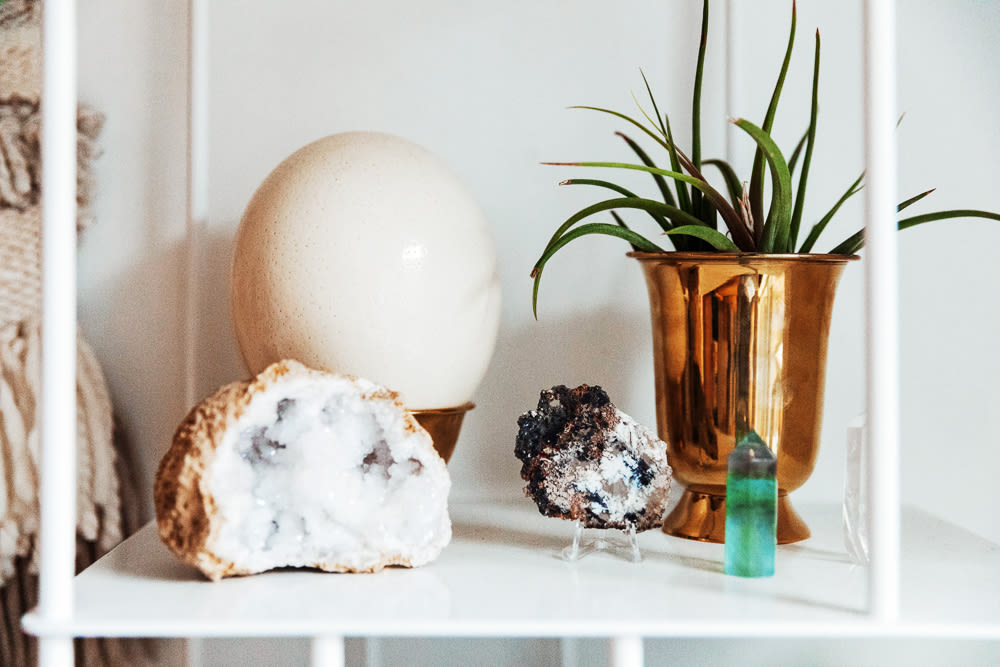
Three years ago, aromatherapist, meditation instructor, and yoga teacher Jenn Tardif shared all things wellness in her Top Shelf. And since then, she’s been busy! Tardif launched a brand, became a mother, started consulting, and produced a podcast (which you can listen to here). It’s a lot to take in, especially for someone whose mantra is “When you move half as fast, you notice twice as much.” As we move into a new year, ITG caught up with Tardif to get her advice on making the most of new opportunities. Her first tip? Throw out the resolutions. Read on for the rest.
“I’ve never been keen on the saying “new year, new me” because, unlike a snake that sheds its skin in one piece, humans evolve constantly and incrementally. A new year’s resolution is quantitative, action-oriented, and tangible. But this is not the year to burden yourself with resolutions—rather than subscribing to the pressure that comes with goal-setting, we can practice small, daily rituals that help foster resilience. And it’s actually easier to effect long-lasting change when we adopt mindfulness as a way of life. If you’re new to this way of thinking, here’s a prompt to consider: how do you want to show up today for your loved ones, your colleagues, and yourself? There are lots of tried and true techniques for being more intentional in your day-to-day.
Infuse Simple Acts with Meaning
I’m often asked to explain the difference between routine and ritual, and intention sits atop the list of necessary ingredients for the latter. When you approach something as simple as making tea in the morning with reverence, you embody the notion that the way you do one thing is the way you do everything. A seemingly mundane act can become ceremonious, setting the stage for your time and attention throughout the rest of the day. In the words of French philosopher Muriel Barbery, “When tea becomes ritual, it takes place at the heart of our ability to see greatness in small things.”
Practice Palm Inhalation
Our sense of smell has a direct pathway to the limbic system, the part of the brain that governs emotions, memories, and moods. That makes aromatherapy a powerful tool for setting intentions with just a few deep breaths. [Ed note: ever hear the advice to sniff something while studying and then again during a test for a better performance? This is kind of like that.] Palm inhalation is the practice of inhaling an aromatherapeutic blend from the palms of your hands. Apply something herbaceous if you need uplifting, or earthy for a grounded feeling into the palm of your hands (3rd Ritual makes options, if you’re at a loss), then rub them together so your skin’s natural oils activate the scent. Then cup your palms a few inches in front of your face, inhale deeply, then remove your hands to exhale freely. Repeat as desired, reciting an intention as you do. My longstanding mantra when I’m feeling stressed is to silently say, “let” as I inhale and “go” as I exhale—the more economical you can be with your words the better, because simple sentences are easier to repeat and retain over time.
Create A Container for Concentration
The idea of sitting for meditation can be daunting, but giving yourself a point of focus is a beautiful bait and switch to get started. In yogic and Buddhist philosophy, meditation is achievable through a ritual of single-pointed concentration called Trataka. To do it, affix your gaze to a dot on the wall or the flickering flame of a candle—as the mind centers on its focal point, the space between thoughts lengthens and creates space for presence and peace. I’m obviously biased, but 3rd Ritual’s Bel candle was born from a desire to help us break free from the tether to our phones while doing this very technique. The Bel uses fire, gravity and sound to measure time. You place a pin in the candle at the minute mark of your choosing, and as the wax melts, the pin will fall and make a resonant ding.
Give Thanks
What if the secret to having it all is realizing that you already do? One of my teachers used to say that you cannot find grace without gratitude. Pausing to give thanks for all that you have, even the intangible, ever-present privileges of your body and your breath, is an effective way to harness a mindset of abundance. To stay consistent, try attaching this practice to a specific time of day, like dinner. If you live with someone else, you can also make gratitude a shared exchange.
Write it Out
My husband likes to joke that there’s a light bulb inside of my pillow, because I’ll remember 10 things to add to my to-do list the moment I lay down. My favorite remedy for settling my thoughts is journaling. It feels like cleaning out the cobwebs of my thinking mind, and often proves to be surprisingly insightful. Most nights I’ll simply write down whatever’s swirling in my brain in a nonlinear, stream of consciousness download onto the page. But if I’m feeling stuck, prompts are incredibly helpful.”
—as told to ITG
Photo via ITG



